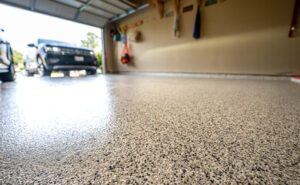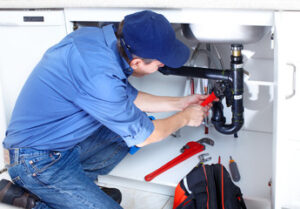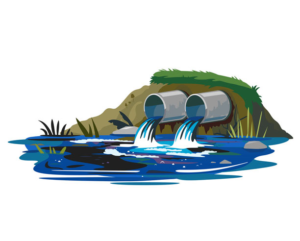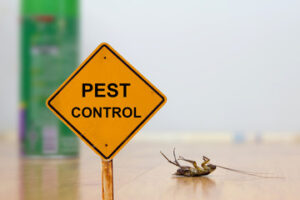Garage Epoxy Huntsville TX is a durable, attractive flooring option for garages. It is resistant to scuffs, scratches, and stains and comes in many different color options as well as mica chips for a variegated appearance.

Chemicals left behind by car maintenance or household cleaning won’t damage epoxy floors either. It also withstands the weight of cars and other heavy vehicles.
Your garage floor is the most important surface in your home, it takes a beating from heavy vehicles and equipment. The best way to protect your garage floors is with a quality epoxy coating. Epoxy is strong enough to hold the weight of vehicles and machinery, and is also resistant to stains, impact damage and chemicals.
When choosing an epoxy resin, it is important to find one with a high compressive strength and tensile strength. The compressive strength will tell you how much crushing force the epoxy can handle, and the tensile strength is how strong it is in pulling stress. This is important to help prevent the epoxy from cracking or peeling from your concrete garage floor.
A good epoxy floor will have a color and texturing system that makes it look more appealing than plain concrete. This is a benefit for homeowners who want to take pride in their homes and have a nice looking garage. Epoxy coatings are available in a variety of colors and patterns, so you can match your floor to the rest of your house.
While the strength of garage epoxy is important, so is how easy it is to clean. Most epoxy flooring can be broom swept, mopped or vacuumed to remove dirt and debris. This is an advantage over a sealant or vinyl tile, which can be difficult to clean and may absorb liquid spills that could erode the material.
It is recommended that any major renovation work to your floor be completed by a professional, as improper preparation of the area can result in costly repairs and replacements. An experienced contractor will be able to give you advice on how to prepare your garage floor and what type of epoxy is best for your needs.
Durability
Epoxy garage floors are designed to last. They are resistant to chemicals, petroleum products and even scratches and chipping. You can drag heavy items across them without fear of the floor being damaged or marred in any way. Epoxy is also easy to clean so you can get oil or chemical spills up quickly with a mop or vacuum cleaner. You can also add a few coats of aliphatic urethane to your epoxy floor for extra protection and longevity.
Another way to add durability to your garage floor is to use color flakes in the application. This will not only add texture and style to the floor but it will help the color blend in well with the clear/transparent epoxy. This will also help in making the floor slip-resistant.
The size of the flakes that you choose to use will have a major impact on the finished appearance of your garage floor. Smaller flakes look modern and work great in a mix of colors, while larger flakes can look good as a single-color installation. Regardless of which type you choose to use, the flakes should be broadcasted on the wet epoxy while it is still tacky to the touch. Some companies offer a shaker top that you can use to broadcast the flakes on the floor, but you can even just grab handfuls of flakes and throw them on the floor like you would sprinkle grass seeds. Practice on a tarp first to learn the best technique for you.
When applying the epoxy to the floor, make sure that you are working in a well-ventilated area and that you are not overworking the material. You will want to spread a thin coat over the entire floor, starting in one corner of your garage and moving outwards. Once you have applied the first coat, wait for it to dry for about two hours. Then, you can start using the garage again.
Water Resistance
If you spend time in your garage working on vehicles, doing woodwork or other projects, chances are you spill or drop tools and other items. If you don’t want your garage floor to be damaged by this, it is important to choose a durable flooring option. Garage epoxy is resistant to damage, and can stand up to heavy equipment and chemicals.
It is also water resistant, so you can pull your vehicle into the garage during a rainstorm without worrying about damaging the floors. This is why it is a better choice for the garage than paint, which can pop up in a moist area. It is a good idea to install a vapor barrier under the concrete before installing an epoxy coating.
Another advantage of epoxy is that it looks beautiful. Epoxy floors are smooth and glossy, and can be designed to look modern, traditional, or rustic. The color and style of the broadcast flake used can have a big impact on how the finished floor looks. It is possible to find flakes that will match your garage decor perfectly.
The finish of the epoxy is also durable and easy to clean. It is resistant to oil, gasoline and other chemicals, making it a great option for your garage. The epoxy is also stain-resistant, so it will not be stained by mud or other substances.
Epoxy is a much thicker product than paint, so it does a better job of covering up cracks and chips. Epoxy also does not emit a strong odor or solvents like paint, and is less prone to yellowing in the sunlight than some other types of coatings.
Chemical Resistance
Epoxy is impervious to gasoline and oil spills and is also resistant to a wide range of other chemicals. This makes it a good choice for garage floors, especially in homes located in snowy areas where salts used on driveways can contaminate the inside of the home and even seep under the garage floor. As a bonus, epoxy is fire retardant and creates a non-slip surface that can help reduce accidents in the garage.
Unlike urethanes, which tend to yellow and fade over time, high-quality epoxy can remain beautiful for many years when properly cared for. However, exposure to sunlight and UV rays can cause a colored epoxy coating to discolor, so it is important to use window treatments, blinds or other sun-blocking methods in the garage to limit how much direct sunlight it receives.
In addition to its chemical resistance, epoxy is extremely hard and thick, so it can withstand abrasion from metal wheeled tools, floor jacks and other heavy equipment that often gets dropped in a residential garage. Moreover, a cured epoxy floor can take the beating from dropping free weights and other workout equipment without chipping or displaying any signs of wear.
The best way to get the most out of your epoxy is to apply it quickly. The mix begins to set up within about two hours, so you should get started as soon as it’s ready. Work in 10-by-10-foot sections and be sure to keep the garage well-ventilated throughout the application and curing process. A three-inch paintbrush works well for cutting in around the edges and corners, but you can also use a roller brush on a long painter’s pole to cover the rest of the garage.
Aesthetics
Today, garages are much more than just a space to park cars and store items. They are a place where the home’s style can be fully realized, and a good way to do that is with a beautiful epoxy flooring. This resilient material can transform a dull, stained concrete floor into a glossy work of art. It also protects the underlying concrete from cracks and stains, adding to its long-term durability.
Epoxy comes in a wide variety of colors and styles, making it easy to find the perfect fit for your home. You can choose a color that will compliment your home’s exterior, or go for something completely bold and unique. It can even be tinted and textured to create a non-slip surface that will improve visibility, reducing the risk of accidents and injuries in the garage.
When choosing an epoxy flooring color, consider how you use your garage and what type of work you do. If you use your garage for working on cars, for example, a black epoxy coating will help mask grease stains and tire marks. It’s also a good choice if you’re working on wood projects, as the color will disguise sawdust and other debris.
Once you’ve chosen your color, have a professional contractor apply the floor. To prep the floor, remove all the items from your garage and cover the walls with painter’s tape and plastic. Clean the garage floor thoroughly with a bristle broom and cleaning solution, then rinse it with water to make sure there are no lingering stains. After the floor is dry, apply the epoxy using a roller in 10×10 sections. If you want to add some texture, you can mix in color flakes at this point to give your garage a custom look.



